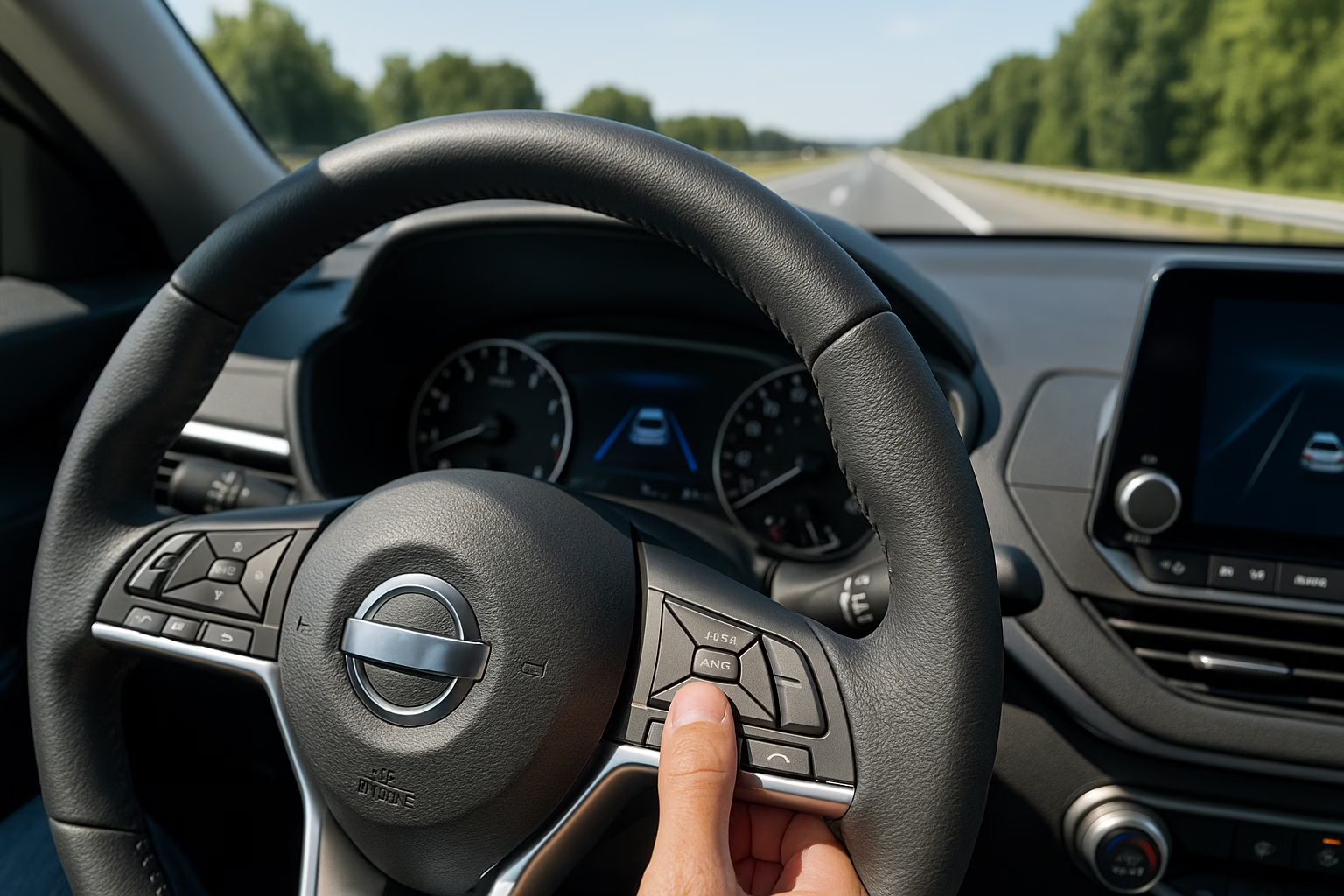Modern advanced driver assistance systems (ADAS) are designed to relieve stress in daily driving. They watch the lanes, maintain distance in traffic and even brake automatically if you don’t react fast enough. But they are not infallible. A driver can’t simply switch off their brain and let the car do all the work. You need to stay engaged and be prepared to override or disable the system when it behaves unexpectedly. In this article, we explore the three most common moments when everyday drivers will find themselves taking back control and explain why these moments occur.
1. Confusing lane markings and road geometry
Lane keeping and lane-centering assist are some of the most popular ADAS features. They use cameras to read lane lines and gently steer the car to keep you within them. These systems work remarkably well on clearly marked highways, but they become confused when the lines disappear. Construction zones often shift lanes temporarily or use faded markings that cameras struggle to see. On rural roads, the line may be worn away entirely, leaving nothing for the software to track. Even on urban streets, poorly painted arrows or merge lanes can cause a brief panic as the system searches for a lane that isn’t there.
When this happens, the car will either drift or issue a flurry of alerts asking you to take over. You might feel the wheel vibrating or hear a beeping as the system switches off. As the driver, you must be ready to steer manually through the confusing segment. The best practice is to treat lane keeping as an assistant rather than an authority. Keep your hands lightly on the wheel at all times and be attentive to changing road markings. If you approach a construction area and notice odd traffic cones or temporary lane shifts, be ready to override the system before it misinterprets the lines.
Merging lanes and off-ramps can also create confusion. Lane assist might tug the wheel in the wrong direction if it misreads which line to follow. When merging, you often need to cross solid white lines deliberately; the system will try to nudge you back if you don’t override it. Pressing the turn indicator or firmly steering will usually disengage lane keeping in these situations. The key is not to fight the car but to communicate your intent clearly through the indicator and consistent steering.
2. Weather, lighting and dirty sensors
ADAS sensors rely on cameras, radar and sometimes lidar to build a picture of the road. Poor weather conditions degrade these sensors just like they degrade human vision. Heavy rain, spray from other vehicles, fog, snow and bright sun glare can all reduce the clarity of camera images. Radar systems struggle with heavy rain and snow because the droplets scatter radio waves. In those moments, you may receive dashboard warnings such as “Lane assist unavailable” or find that adaptive cruise cuts out because it cannot see the car ahead. Temperature extremes can also cause issues if sensors ice up or fog over.
Another common problem is dirt, mud or bugs on the camera lens or radar sensor. If you drive on gravel roads or in the countryside, a single splash of thick mud can cover the forward camera. Even a layer of dust can degrade performance. Some vehicles have built-in washer jets, but many do not. A tell-tale sign is when the system fails to recognise lanes or vehicles it normally spots easily. Pull over when safe and wipe the camera lens with a clean cloth. In winter, keep an eye on snow and ice build-up around sensors; a small patch of frozen grime can disable your driver aids completely.
At sunrise or sunset, low angles of sunlight can dazzle the camera. This is why you may see an unexpected deactivation message during golden hour drives. The best response is to slow down and be prepared to take over. Do not assume the car will maintain lane position when it is effectively blinded by glare.
3. Human intention versus machine assumption
Even when the road markings are clear and the weather is perfect, you may need to override the system simply because you want to do something it doesn’t expect. Adaptive cruise control is designed to maintain a set following distance. If you are in a hurry, you might choose to close that gap to merge quickly, but the car will try to hang back. To overtake a slow vehicle on a two-lane highway, you may need to accelerate quickly; the system may resist because it detects the car ahead. Pressing firmly on the accelerator will override adaptive cruise control and give you full control of speed. Similarly, lane centring might try to keep you perfectly centred in your lane, but you might move over slightly to give a cyclist more space. The system will nudge you back unless you override it with the indicator or by taking the wheel.
Another scenario involves roundabouts and intersections. Many driver assistance systems are tuned for highway driving and become unpredictable in complex urban environments. At a roundabout, adaptive cruise may not recognise that there is no one ahead of you while you slow down; it might brake abruptly or accelerate unexpectedly. In these situations, it is best to disable adaptive cruise and use your own judgement until you are back on a straight road. Some vehicles require you to press a dedicated cancel button on the steering wheel; in others you can simply tap the brake pedal.
Staying in charge: How to override smoothly
So how do you handle these override moments without panic? First, be proactive. Pay attention to upcoming road conditions and plan to take over before the system fails. When you see construction signs or heavy weather ahead, press the cancel button on adaptive cruise or switch off lane keeping assistance manually. Many cars allow you to disable lane keeping via a button near the steering wheel or in the vehicle settings menu. Familiarise yourself with these controls while parked, so you don’t have to fumble mid-drive.
Second, use gentle inputs. The systems are designed to recognise an intentional override; a firm hand on the wheel or a light press of the brake will usually suspend assistance temporarily. Don’t jerk the wheel or slam the pedals unless there is an emergency. Smooth, deliberate actions will keep the car stable and let the software know you are in control.
Third, re-engage when appropriate. Once you are past the confusing section or weather improves, it is often safe to turn assistance back on. This is especially useful on long drives to reduce fatigue. But only re-engage when you are confident that sensors are clean and the road environment is suitable.
Finally, communicate with passengers and fellow drivers. If you share your car, make sure your partner or kids understand how the assistance systems behave. Explain that there will be times when you override the car, and show them how to do it themselves. We will explore this topic in more detail in an upcoming post about teaching family members not to fight the car.
Looking ahead
Override moments are not failures; they are part of the collaborative partnership between human and machine. As long as you stay alert and treat ADAS features as helpers, not replacements, you will be prepared to step in when necessary. For more details on when not to trust driver assistance systems, check out our earlier article on red flags drivers should watch for, and for advice on how to disable systems quickly and calmly, see our practical guide to turning off ADAS features mid-drive.

Hiran Alwis is an automotive lecturer and ADAS specialist with over 15 years of experience in diagnostics, advanced safety systems, and technical training. He founded ADAS Project to help everyday drivers and workshop technicians understand and safely use advanced driver assistance systems.
